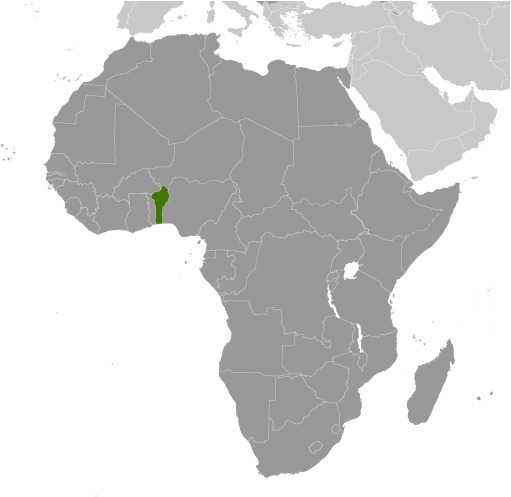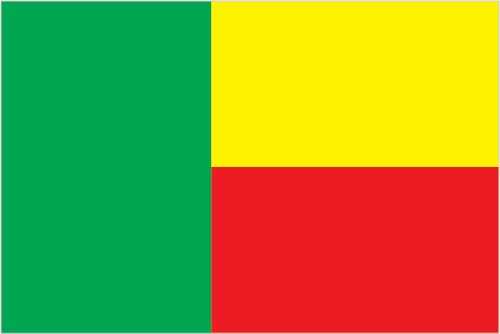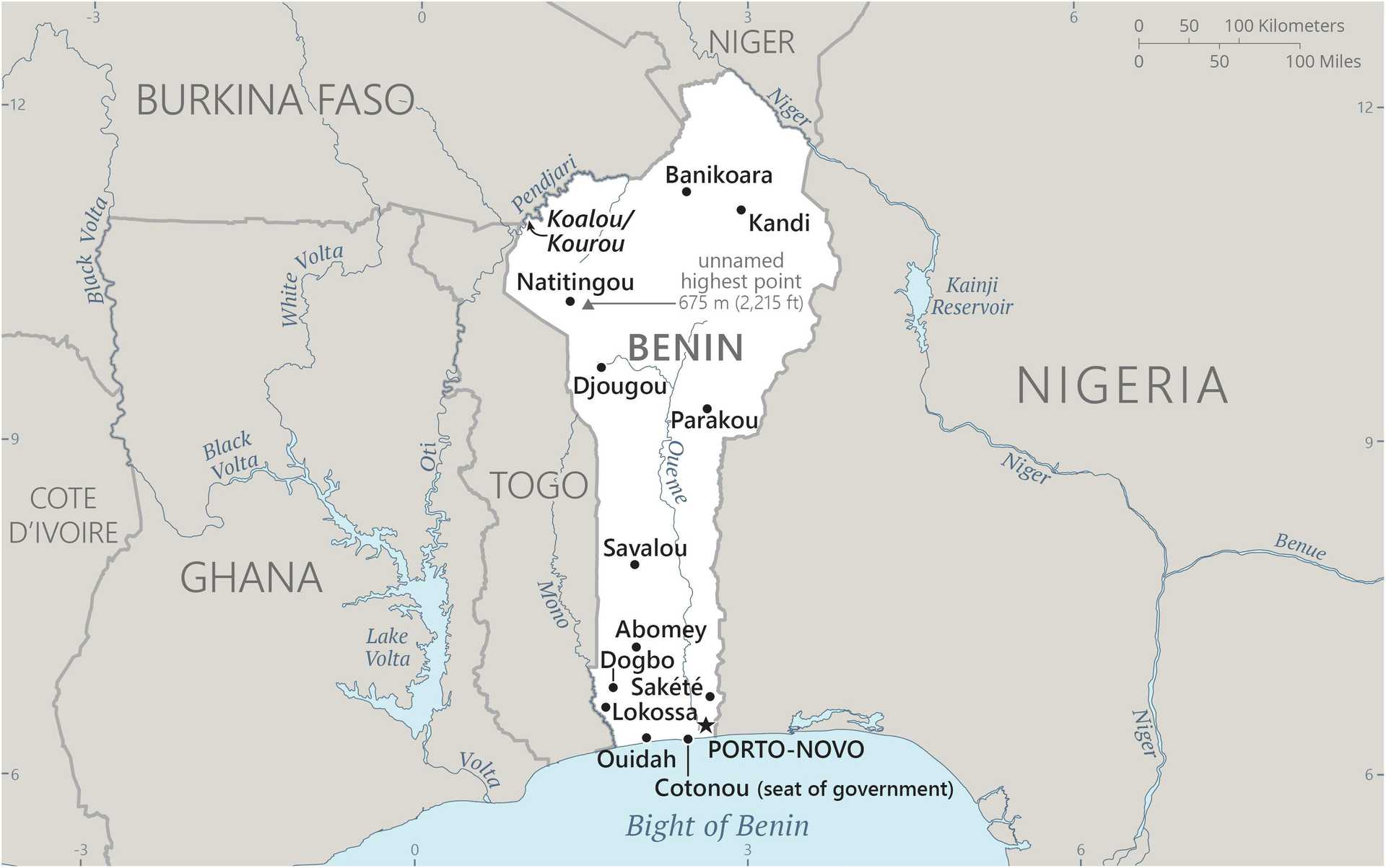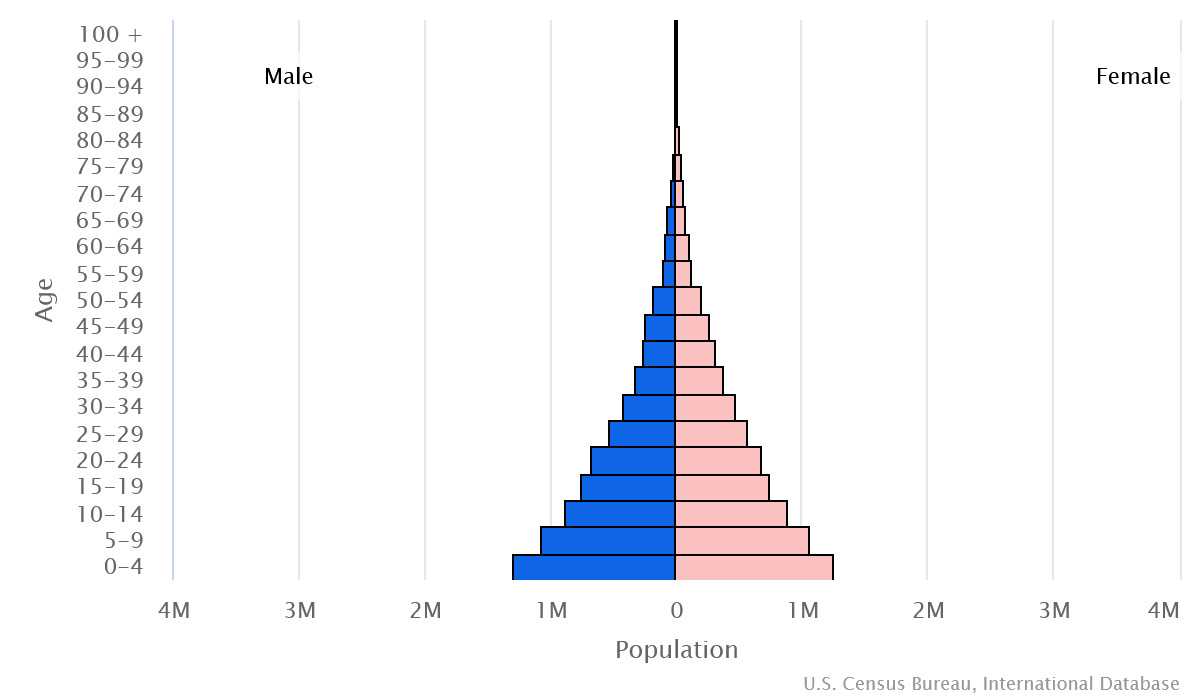Introduction
Background
Present-day Benin was the site of Dahomey, a West African kingdom that was a regional power from around 1600 through the mid-19th century. By 1894, France had taken control of the area. French Dahomey achieved independence in 1960 and changed its name to the Republic of Benin in 1975.
Geography
Area
total : 112,622 sq km
land: 110,622 sq km
water: 2,000 sq km
Climate
tropical; hot, humid in south; semiarid in north
Natural resources
small offshore oil deposits, limestone, marble, timber
People and Society
Population
total: 14,697,052
Ethnic groups
Fon and related 38.4%, Adja and related 15.1%, Yoruba and related 12%, Bariba and related 9.6%, Fulani and related 8.6%, Ottamari and related 6.1%, Yoa-Lokpa and related 4.3%, Dendi and related 2.9%, other 0.9%, foreigner 1.9% (2013 est.)
Languages
55 languages; French (official); Fon (a Gbe language), Yom (a Gur language) and Yoruba are the most important indigenous languages in the south; half a dozen regionally important languages in the north, including Bariba (once counted as a Gur language) and Fulfulde
Religions
Muslim 27.7%, Roman Catholic 25.5%, Protestant 13.5% (Celestial 6.7%, Methodist 3.4%, other Protestant 3.4%), Vodoun 11.6%, other Christian 9.5%, other traditional religions 2.6%, other 2.6%, none 5.8% (2013 est.)
Population growth rate
3.29% (2024 est.)
Government
Government type
presidential republic
Capital
name: Porto-Novo (constitutional capital); Cotonou (seat of government)
Executive branch
chief of state: President Patrice TALON (since 6 April 2016)
head of government: President Patrice TALON
Legislative branch
description: unicameral National Assembly or Assemblee Nationale (109 seats, including 24 seats reserved for women; members directly elected in multi-seat constituencies by party-list proportional representation vote; members serve 5-year terms except for the current members whose terms will end in 2026 to facilitate general elections)
Economy
Economic overview
robust economic growth; slightly declining but still widespread poverty; strong trade relations with Nigeria; cotton exporter; COVID-19 has led to capital outflows and border closures; WAEMU member with currency pegged to the euro; recent fiscal deficit and debt reductions
Real GDP (purchasing power parity)
$52.51 billion (2023 est.)
$49.374 billion (2022 est.)
$46.468 billion (2021 est.)
Real GDP per capita
$3,800 (2023 est.)
$3,700 (2022 est.)
$3,600 (2021 est.)
Agricultural products
cassava, yams, maize, oil palm fruit, cotton, rice, pineapples, soybeans, tomatoes, vegetables (2022)
Industries
textiles, food processing, construction materials, cement
Exports
$4.154 billion (2021 est.)
$3.506 billion (2020 est.)
$3.585 billion (2019 est.)
Exports - partners
India 27%, Bangladesh 24%, UAE 23%, China 4%, Egypt 2% (2022)
Exports - commodities
cotton, gold, coconuts/Brazil nuts/cashews, soybeans, oil seeds (2022)
Imports
$4.925 billion (2021 est.)
$3.942 billion (2020 est.)
$4.307 billion (2019 est.)
Imports - partners
China 24%, India 14%, US 6%, UAE 6%, France 5% (2022)
Imports - commodities
rice, refined petroleum, palm oil, cars, poultry (2022)
Exchange rates
Communaute Financiere Africaine francs (XOF) per US dollar -
Page last updated: Wednesday, July 24, 2024




